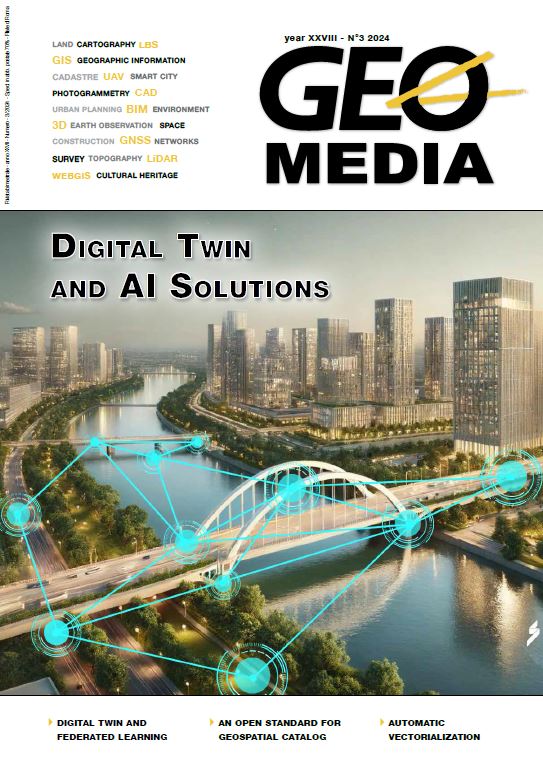THE FALERII NOVI PROJECT
Keywords:
archaeology, geophysics, laser scanning, falerii novi, aerial photographyAbstract
The Roman town of Falerii Novi sits 50km north of Rome on the ancient Via Amerina. According to historical sources, it was founded after the Roman conquest of the nearby Faliscan centre of Falerii Veteres in 241 BC (Polyb. 1.65; Liv. Epit. 20; Eutrop.
2.28; Oros. 4.11; Zon. 8.18).
The urban site appears to have persisted at least until the first half of the sixth century AD, with the bishopric of Aquaviva ascribed to the site in AD 465 (Duchesne, 1892).
A monastery and church of Santa Maria di Falleri were founded by Cistercians and first mentioned in documents of the eleventh and twelfth centuries, now forming the only standing structure on site other than the ancient circuit walls.
References
La Andrews, M., Bernard, S., Dodd, E., Fochetti, B., Kay, S., Liverani, P., Millett, M. and Vermeulen, F. 2023a. ‘The Falerii Novi Project’, Papers of the British School at Rome 91: 9–34.
Andrews, M., Bernard, S., Ceccarelli, L., Dodd, E., Fochetti, B., Kay, S. and Vermeulen, F. 2023b. ‘The Falerii Novi Project: the 2022 season’,
Papers of the British School at Rome 91: 331–35.
Andrews, M., Bernard, S., Dodd, E., Kay, S. (In Press). ‘The Falerii Novi Project: the 2023 season’, Papers of the British School at Rome
Bernard, S., Andrews, M., Ceccarelli, L., Dodd, E., Kay, S., Leone, N. and Vermeulen, F. 2022. ‘The Falerii Novi Project: the 2021 season.’ Papers of the British School at Rome 90: 341–345.
Biella, M.C. (2020). Falerii Veteres - Falerii Novi: Il record archeologico. In M.C. Biella, ed. Displacements: continuità e discontinuità urbana nell’Italia centrale tirrenica. Rome: Quasar: 67-81.
Duchesne, L. (1892) Le sedi episcopali nell’antico ducato di Roma, Archivio della R. Società Romana di storia patria 15: 475-512. Fochetti, B. (In Press). Il tempio monumentale repubblicano di Falerii Novi: ricerche storico topografiche sull’insula XXXI (Area 4). Papers of the British School at Rome 92.
Frederiksen, W.M. and Ward-Perkins, J.B. (1957) The ancient road system of the central and northern Ager Faliscus (notes on southern Etruria). Papers of the British School at Rome 25: 67–203.
Hay, S., Johnson, P. Keay, S. and Millett, M. (2010) Falerii Novi: further survey of the northern extra-mural area. Papers of the British School at Rome 78: 1–38.
Keay, S., Millett, M., Poppy, S., Robinson, J., Taylor, J. and Terrenato, N. (2000) Falerii Novi: a new survey of the walled area. Papers of the British School at Rome 68: 1–93.
Millett, M. (2007) Urban topography and social identity in the Tiber Valley, in R. Roth and J. Keller, eds. Roman by integration: dimensions
of group identity in material culture and text. Journal of Roman Archaeology Supplement Series 66. Portsmouth RI. 71-82.
Pomar, E. (In Press). Falerii Novi: the fringes of the city. Papers of the British School at Rome 92 Scardozzi, G. (2003) Falerii Novi. In M. Guatioli (ed.) Lo sguardo di Icaro: le collezioni dell’Aerofototeca Nazionale per la conoscenza del territorio: 394-402. Rome, Campisano Editore.
Verdonck, L., Launaro, A., Vermeulen, F. and Millett, M. (2020) Ground-penetrating radar survey of Falerii Novi: a new approach to
the study of Roman cities. Antiquity 94: 705–23.
Downloads
Published
How to Cite
Issue
Section
License

This work is licensed under a Creative Commons Attribution-NonCommercial-ShareAlike 4.0 International License.
Gli autori che pubblicano su questa rivista accettano le seguenti condizioni:- Gli autori mantengono i diritti sulla loro opera e cedono alla rivista il diritto di prima pubblicazione dell'opera, contemporaneamente licenziata sotto una Licenza Creative Commons - Attribuzione che permette ad altri di condividere l'opera indicando la paternità intellettuale e la prima pubblicazione su questa rivista.
- Gli autori possono aderire ad altri accordi di licenza non esclusiva per la distribuzione della versione dell'opera pubblicata (es. depositarla in un archivio istituzionale o pubblicarla in una monografia), a patto di indicare che la prima pubblicazione è avvenuta su questa rivista.
- Gli autori possono diffondere la loro opera online (es. in repository istituzionali o nel loro sito web) prima e durante il processo di submission, poiché può portare a scambi produttivi e aumentare le citazioni dell'opera pubblicata (Vedi The Effect of Open Access).





